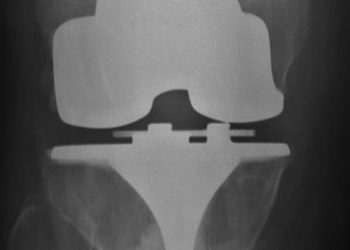New delirium severity tool used to predict clinical outcomes
Image: PD
1. Higher scores on a new Confusion Assessment Method Severity tool (CAM-S) were associated with poorer in-hospital and post-hospital outcomes.
Evidence Rating Level: 2 (Good)
Study Rundown: Delirium is a common and costly condition affecting older patients, and is associated increased complications and mortality among hospitalized individuals. While the Confusion Assessment Method (CAM) is a standardized, validated measure that is widely used to screen for delirium, providers lack an appropriate instrument with which to quantify the severity of delirium. A CAM-based severity measure would have important uses in both clinical and research practices: it would allow providers to track delirium severity over time and in response to treatment, and serve as a primary outcome for prognostic studies and treatment trials. The current study developed a new CAM-based scoring system for delirium severity, the CAM-S, and validated both a short form (4-item) and long form (10-item) instrument in 2 independent cohorts. They found that for both the short and long form tools, a higher maximum CAM-S score during hospitalization was associated with worse hospital outcomes including increased length and cost of stay. A higher CAM-S score was also associated with worse post-hospital outcomes, including rates of death. One limitation of this study is that patients in both cohorts were older than 70 years of age. Nonetheless, the current study provides evidence that a new delirium severity measure, the CAM-S, is strongly associated with important in-hospital and post-hospital outcomes.
Click to read the study, published today in Annals of Internal Medicine
Relevant Reading: Clarifying Confusion: The Confusion Assessment Method: A New Method for Detection of Delirium
In-Depth [cohort study]: Study participants were from 2 prospective cohort studies. The Successful Aging After Elective Surgery (SAGES) study subjects were 300 consecutive patients aged 70 and older scheduled for elective major non-cardiac surgery. Project Recovery patients were 919 consecutive patients aged 70 and older admitted to a hospital medicine service. Patients with delirium or profound dementia on admission were ineligible. The CAM-S short and long forms were developed by the authors. The short form was based on 4 features from the CAM diagnostic algorithm (acute onset or symptom fluctuation, inattention, disorganized thinking, and altered level of consciousness) while the long form was based on the 10 features from the full CAM instrument. In both cohorts, delirium was rated daily using both the CAM and the CAM-S. The primary outcome was the association of the maximum CAM-S score during hospitalization with hospital and post-hospital outcomes. Mean length of stay increased with higher CAM-S scores during hospitalization for both short form (from 6.5 to 12.7 days, p< 0.001) and long form (from 5.6 days to 11.9 days, p<0.001) severity, as did mean cost of hospital stay. Adjusted relative risk of death or nursing home residence at 90 days also increased progressively with higher levels of short form (1.0 to 2.5, p 0.001) and long form (1.0 to 2.5, p<0.001) severity.
©2012-2014 2minutemedicine.com. All rights reserved. No works may be reproduced without expressed written consent from 2minutemedicine.com. Disclaimer: We present factual information directly from peer reviewed medical journals. No post should be construed as medical advice and is not intended as such by the authors, editors, staff or by 2minutemedicine.com. PLEASE SEE A HEALTHCARE PROVIDER IN YOUR AREA IF YOU SEEK MEDICAL ADVICE OF ANY SORT.





